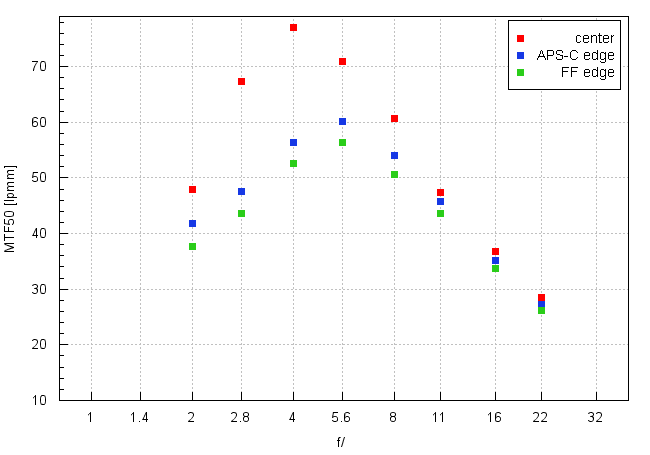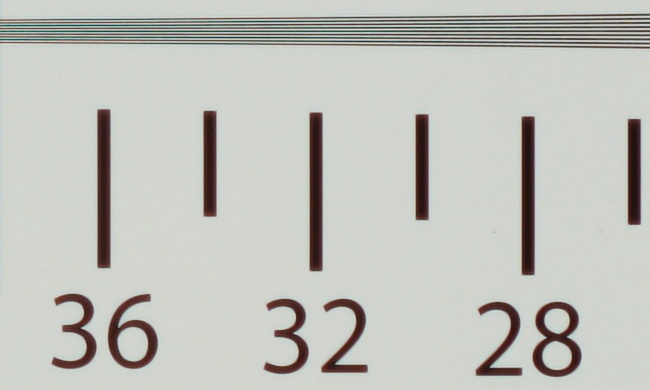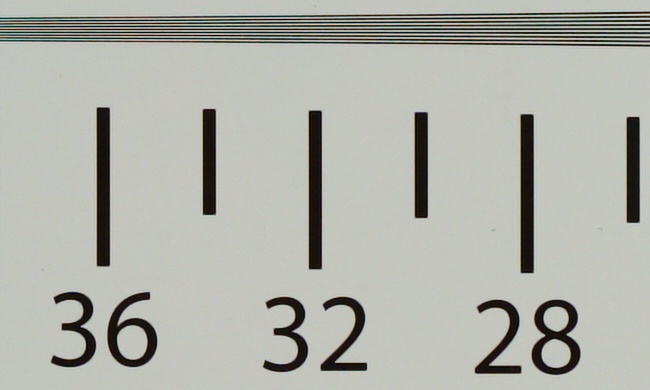Carl Zeiss Batis 40 mm f/2 CF
4. Image resolution
Let's check how the Zeiss Batis 40 mm f/2 CF compares – its results in the frame centre, on the edge of the APS-C sensor and on the edge of full frame presents a graph below.

Please Support UsIf you enjoy our reviews and articles, and you want us to continue our work please, support our website by donating through PayPal. The funds are going to be used for paying our editorial team, renting servers, and equipping our testing studio; only that way we will be able to continue providing you interesting content for free. |
- - - - - - - - - - - - - - - - - - - - - - - - - - - - - - - - - - - - - - - - - - - - - - - -
It's clear that our opinion concerning Batis lenses, and expressed in the introduction chapter, has to be changed now. The Zeiss 2/40 CF already at the maximum relative aperture is able to provide images of good quality; on stopping down its quality improves in leaps and bounds. The process is so quick that already by f/4.0 you get MTFs which brush against record values, reaching a level of 77.1 lpmm. Officially it's still less than the maximum values of two Voigtlander devices, mentioned above, but you have to remember measuring error margin which, in this case, amounts to about 1-2 lpmm. After taking that into acocunt you find out that the results of the Batis and our two record-holders seem to interlock. Practically speaking, no matter whether you deal with 77 or 78 lpmm, images with such a resolution level are sensational all the same.
Also we can't have any reservations concerning the performance on the edge of the APS-C sensor. At the maximum relative aperture the image quality remains completely acceptable and it also improves very quickly on stopping down the aperture. The highest MTF values,on a very good level of 60 lpmm, we got near f/5.6.
The performance on the edge of full frame is just a tad weaker than the same performance on the edge of APS-C but that 'tad' is enough to make image quality at the maximum relative aperture decrease just below the decency level. Still as soon as you stop down the aperure a bit, even by just 1/3-1/2 EV, the lens reaches the decency level. Maximum results once again can be observed near the maximum relative aperture by f/5.6 and you deal with a good resolution of 56 lpmm.
To sum up, the Batis 40 mm f/2 CF practically has no weak points. Not only it provides good image quality up from the maximum realtive aperture but on stopping down it can reach even record-breaking resolution values. It is the very feature you expect from an expensive lens made by a renowned producer.
At the end of this chapter traditionally we present crops taken from photos of our resolution testing chart. They were saved in JPEG format along with RAW files we used for the analysis above.
| A7R II, JPEG, 40 mm, f/2.0 |
 |
| A7R II, JPEG, 40 mm, f/4.0 |
 |






